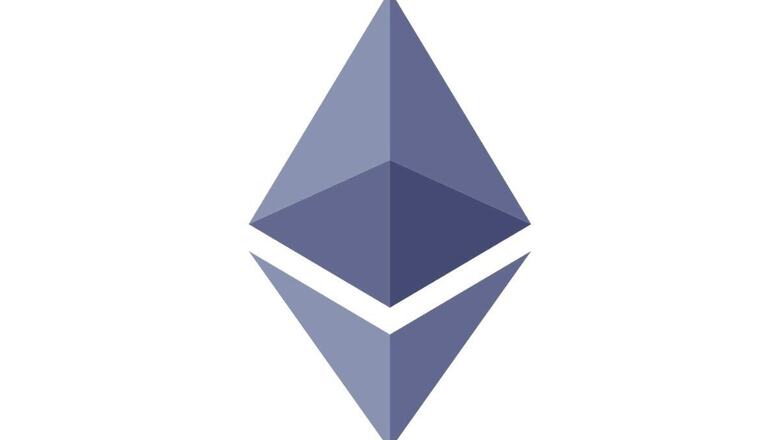
views
Cryptocurrency consumes a lot of energy. Or not as much as people fret about. Depends on who you listen to. Credit where it is due, this was highlighted for the masses by the Dogefather himself, Elon Musk, who did point out the Bitcoin and cryptocurrencies in general have a fairly large environmental footprint. But much before Musk and Tesla banishing Bitcoin to the naughty step for guzzling energy for their existence, popular decentralized and open-source blockchain Ethereum had already announced intentions for a technological overhaul that would reduce energy use by as much as 99%, and Vitalik Buterin expects Ethereum 2.0 to be in place by the end of 2021. This will suddenly transform Ether, the native cryptocurrency, into one of the most environmentally friendly crypto compared with rival crypto coins including Bitcoin. This move comes at a time when the crypto space is dealing with volatility.
Buterin, the inventor of Ethereum, hopes that the change to Proof Of Stake (PoS) from the present Proof Of Work (PoW) system. Switching to proof of stake has become more urgent for us because of how crypto and Ethereum have grown over the last year,” Buterin has reportedly said in an interview. “I’m definitely very happy that one of the biggest problems of blockchain will go away when proof of stake is complete,” he added. The change is needed too and cannot come soon enough. Ethereum hopes that the Proof Of Stake system will reduce the costs of buying and running powerful computing systems and instead cryptocurrency Ether steps in. You’ll have to stake 32 ETH in order to enable a validator software, though you can make smaller stakes to stake pools, and the hope is that decentralizing these transaction processes will make Ethereum more secure. “Staking is the act of depositing 32 ETH to activate validator software. As a validator you’ll be responsible for storing data, processing transactions, and adding new blocks to the blockchain,” says Ethereum. Those who stake ETH will earn more ETH as part of the process in Ethereum 2.0 once it is implemented.
The Ethereum 2.0 upgrade is a three-part process, with the first step called The Beacon Chain, of which ETH staking is a part, is already Live. The developers hope that as part of the second stage called The Merge, where the current systems are migrated to the new processes, the change over will happen by the end of the year. The third stage expected next year, will introduce the process of sharding which will divide the database horizontally and spread it across to reduce network load. These shard chains will spread the network load across 64 new chains, which will enable lower hardware requirements for nodes in the network.” With shard chains, validators only need to store/run data for the shard they’re validating, not the entire network (like what happens today),” says Ethereum. The shift in focus away from powerful configurations and hardware, would be great news for the PC ecosystem in general. It was in February that we had reported how Nvidia, a brand popular with gamers for their graphics cards, had rolled out a driver update for one of their latest cards because crypto miners were attempting to buy this in hoards which left gamers with an out-of-stock situation. The attempt was to cut down the hash rate (mining efficiency) of the RTX 3060 in half for Ethereum miners, to make this card less attractive to crypto miners and will allow gamers to buy these instead.
Another cryptocurrency called Chia, had already shown the way with more environmentally processes. Chia, the creation of the founder of BitTorrent, Bram Cohen, implements a big difference in how it operates compared with Bitcoin, Ethereum, Litecoin, Dogecoin, Bitcoin Cash and others. The Chia Network works on something called “farming” and not mining. The details suggest this uses proof of space and time, and not PoW which uses extreme energy. Instead of running the processor and graphics cards at high power settings, Chia will use the unused space in your PCs storage drive to farm the currency. The other advantage for crypto enthusiasts is that you’d not have to spend on a faster processor or graphics card—just a storage that’s quick enough for farming. The result is much lesser energy consumed than Bitcoin or Ethereum.
Digital currency such as Bitcoin and Ether isn’t owned by one authority and the decentralized system means it needs a network of computers around the globe working at capacity to complete complex calculations to mine new coins and complete transactions with existing crypto coins. This is also known as proof of work (PoW). This usually runs for hours, if not days. The faster a computer does these calculations, the quicker the process moves—but at the same time, a powerful computer with a fast processor and graphics card, will also dial up the energy requirements. Data collected by Digiconomist from the Ethereum Energy Consumption Index says that Ethereum consumes electrical energy that is comparable to the power consumption of Hong Kong and the resulting carbon footprint is comparable to that of Lebanon. Every single Ethereum transaction consumes the energy that is equal to the power consumption of an average US home over a period of 2.82 days. The carbon footprint for a single transaction? Same as you watching 6,610 hours of YouTube videos.
Read all the Latest News, Breaking News and Coronavirus News here. Follow us on Facebook, Twitter and Telegram.



















Comments
0 comment